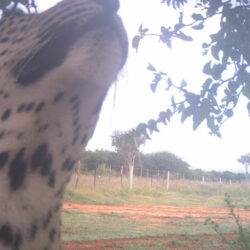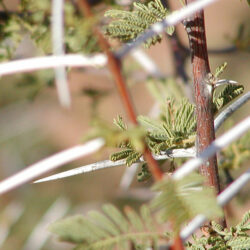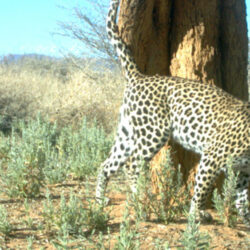Back to Work and Tracking Cats with Scat
-

- by Tayla Green May 28, 2020
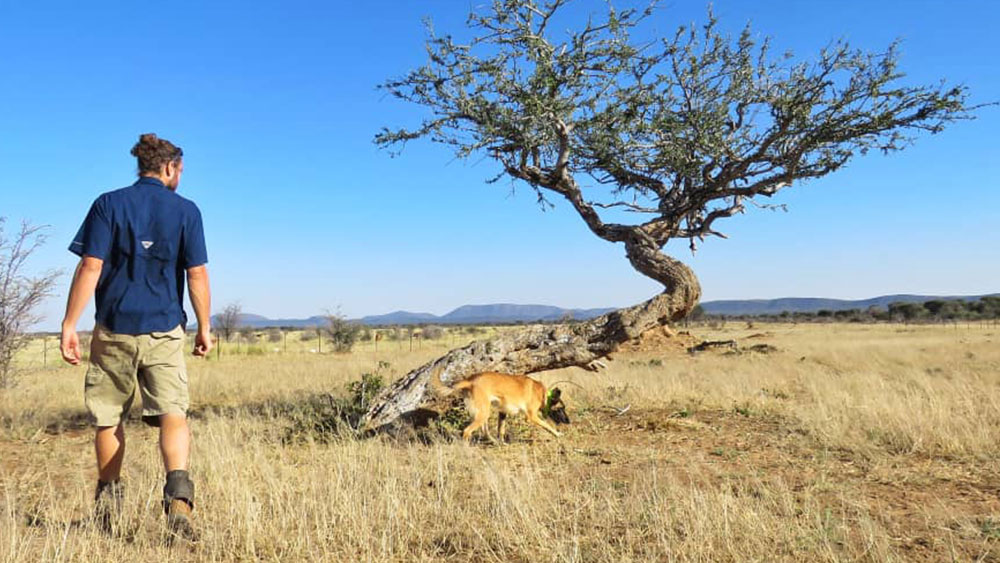
Enya, one of CCF’s Scat Detection Dogs, recently visited several local farms to search for the presence of wild cheetah, with her human Tim Hofmann, CCF’s Scat Detection Dog Researcher and Handler.
In Namibia, the majority of cheetahs occur outside of protected areas, and so CCF works with land owners and custodians to uncover information about cheetah populations and to assist in mediating human wildlife conflict situations.
Enya is one of three specialised sniffing dogs at CCF who are trained to detect cheetah scat (feces), through the most non-invasive means necessary. The team cover vast areas of land due to the large home ranges of the cheetah, but using their highly developed noses, the dogs can detect and locate scat from far away. Many scats are found on ‘cheetah playtrees,’ trees that cheetahs defecate or urinate on to leave messages behind for other cheetahs. Once the dogs have located scat, they sit down to indicate their discovery to Tim, who then rewards them with their favourite toy.
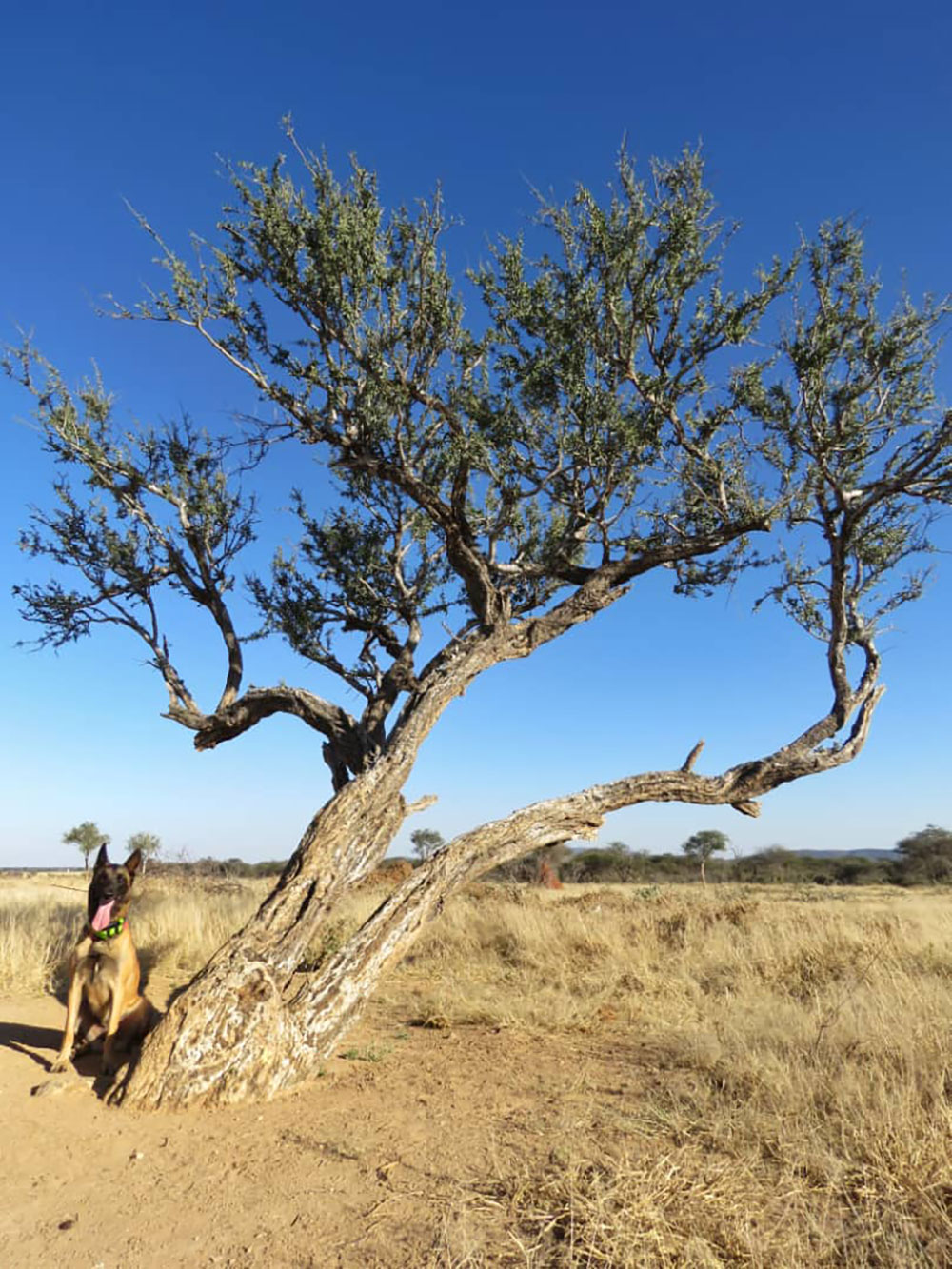
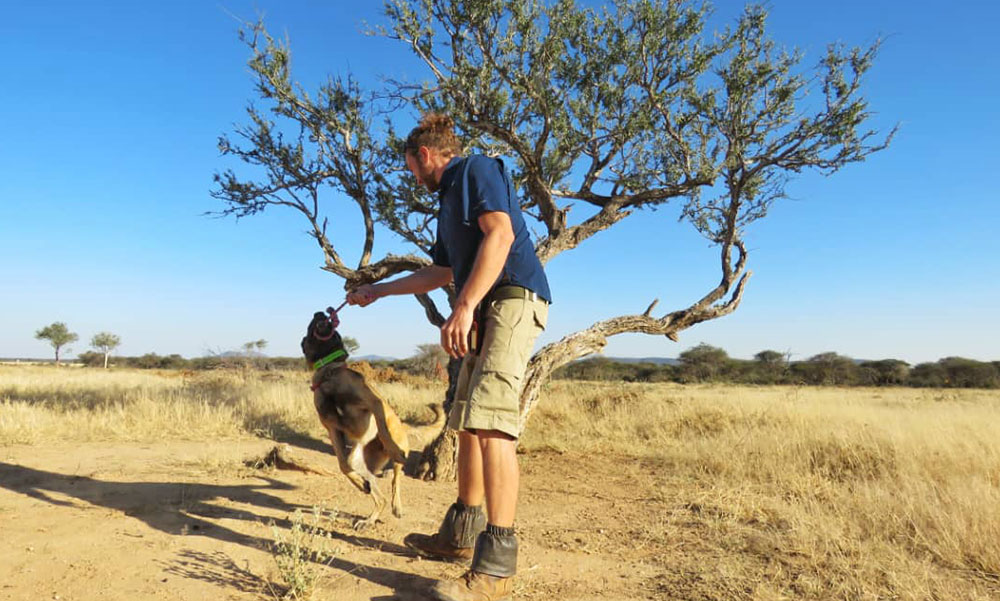
Samples of the cheetah scat are then collected and taken to CCF’s Genetics Laboratory, where DNA is analysed to determine the identity of the cheetah, and clues about populations such as distribution and movement patterns. Cheetah scat can also be analysed to determine prey species. The Scat Detection Dog Programme ties into CCF’s mission by providing information about the free ranging cheetah, which aids to shape conservation solutions for cheetahs and other predators for human wildlife coexistance.
Wildlife Sighting
While checking up on known and searching for new cheetah playtrees, the team discovered a female boomslang ‘hanging out’ in a sociable weaver bird’s nest. Boomslang translates to tree snake in Afrikaans, and this species is regularly sighted winding their way through birds nests looking for a meal.
Photos taken by Tayla Green.
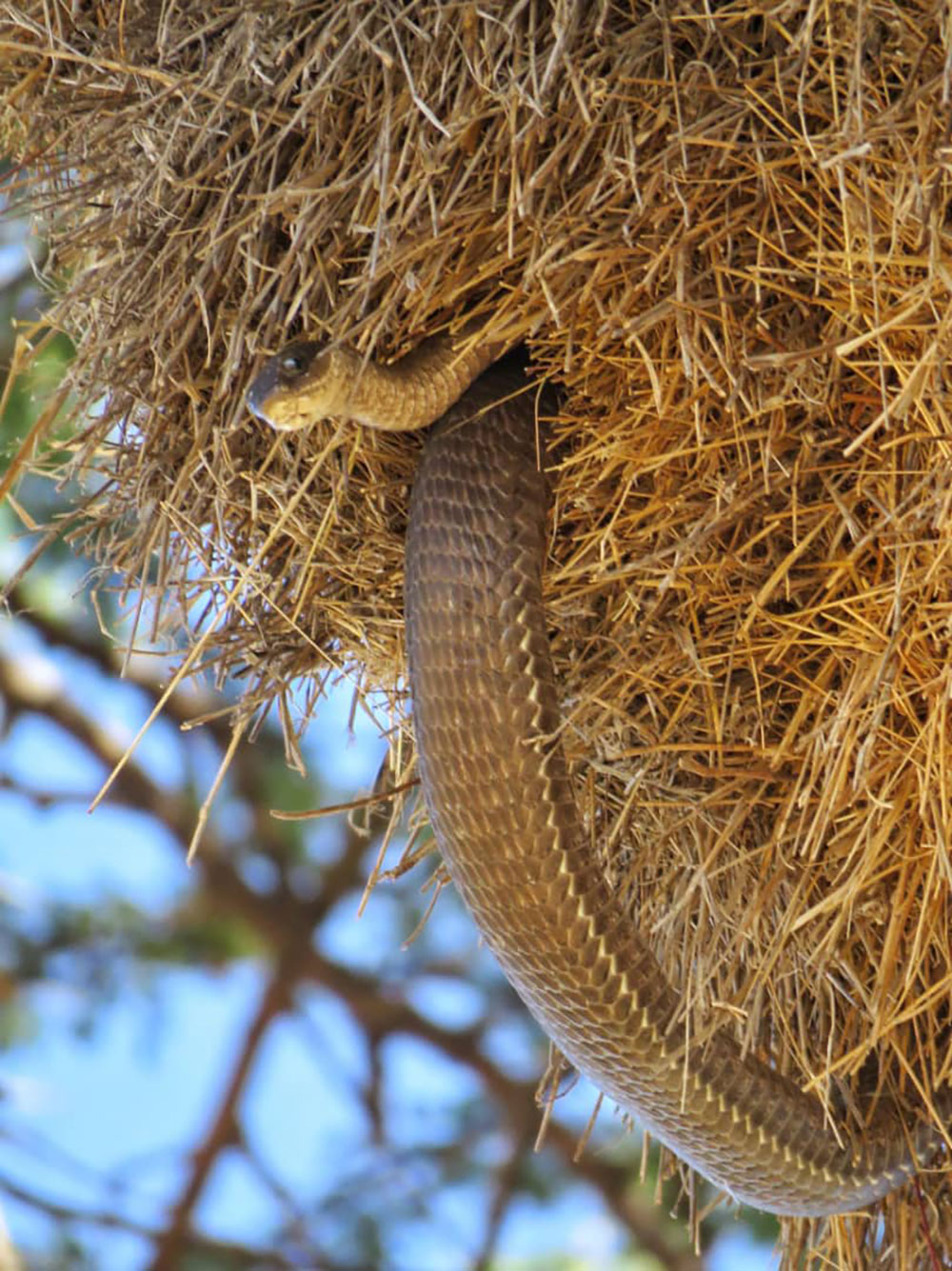

Interested in Snakes?
See more recent sightings including a few relocations here.

